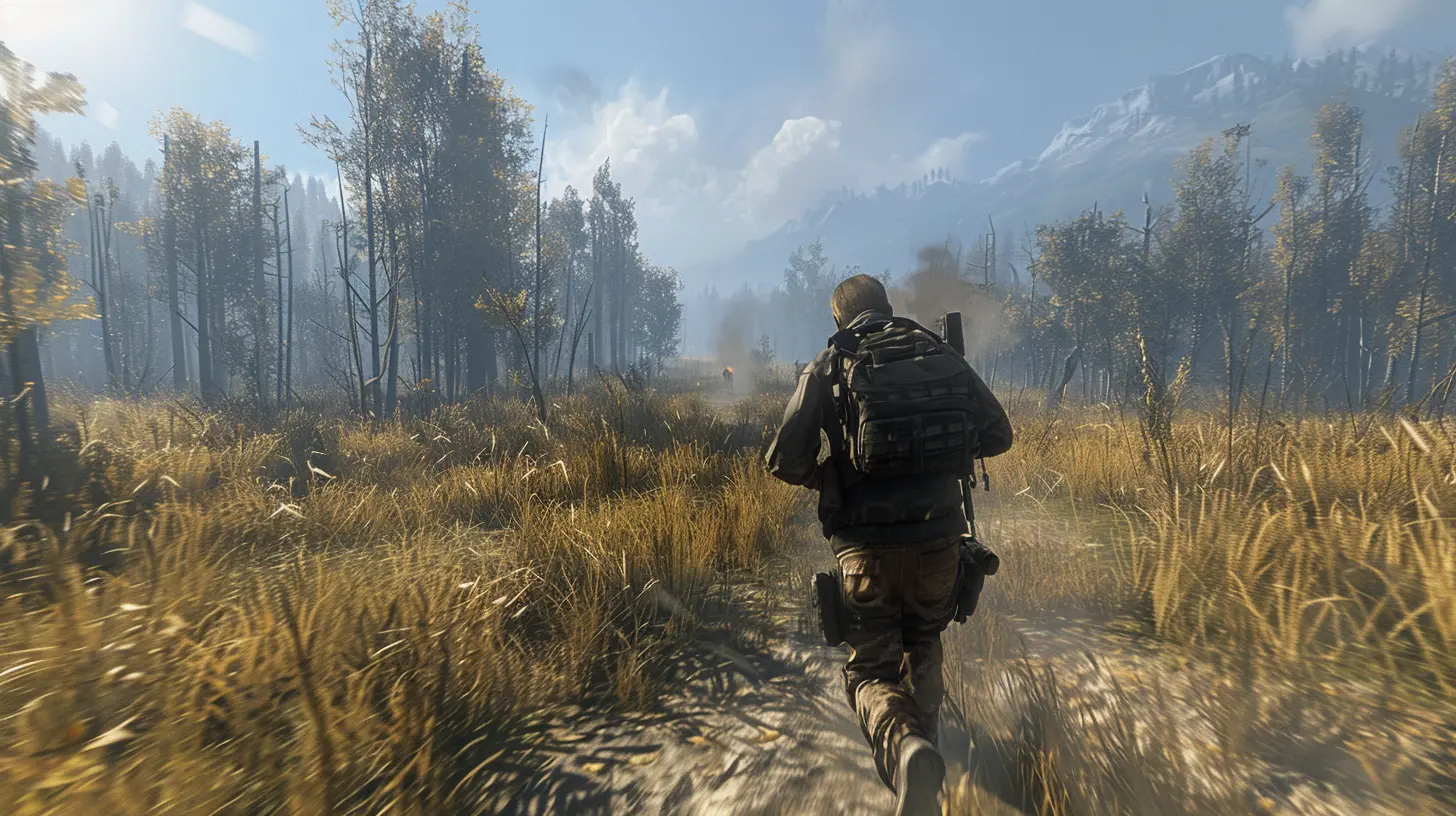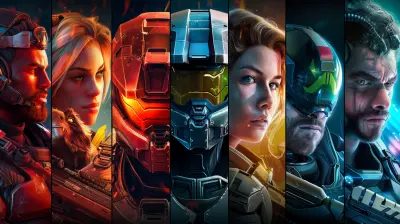How Third-Person Shooters Handle Movement Fluidity
3 November 2025
If you've ever dipped your toes into a third-person shooter game, you know movement isn’t just about running around — it’s the lifeblood of the entire gameplay experience. Think about it: if your character controls like a shopping cart with a wobbly wheel, you're not going to enjoy the firefight, no matter how cool the guns are or how flashy the explosions look.
So, how do third-person shooters pull off buttery smooth movement that feels good, looks great, and keeps players coming back for more? That’s exactly what we’re diving into today.

Why Movement Fluidity Matters in Third-Person Shooters
Before we get into the nitty-gritty of how developers make characters move like action movie heroes, let's answer the big “why.” Why does movement fluidity matter so much?Well, in third-person shooters, you're not just controlling a disembodied pair of hands like in first-person games. You get to see your full character on screen at all times. That means every sprint, slide, roll, or hop needs to look and feel natural — any jankiness breaks immersion instantly.
Plus, fluid movement isn't just eye candy; it directly impacts gameplay. You need to dodge bullets, peek around corners, vault over objects, and take cover, all in a few seconds. If your movement feels sluggish or delayed, good luck surviving a high-stakes shootout.

The Core Elements Behind Fluid Movement
Let’s break down how developers make characters move so gracefully in third-person shooters. From animation blending to responsive controls, it's all about keeping things tight and reactive.1. Responsive Controls Are King
If there’s a delay between your button press and the character’s action, you’re gonna feel it. Ever tried turning quickly in a game and the character takes half a second to pivot? Frustrating, right?Developers obsess over control responsiveness like chefs fuss over seasoning. They cut down input lag, streamline control mapping, and ensure that player actions translate instantly on screen. In fact, many games have “snappy” movement precisely because the moment you press a button, you're rewarded with a visible reaction.
2. Animation Blending: Making Movement Look Seamless
Smooth transitions between animations are key. When your character switches from walking to sprinting or aims and shoots mid-dodge, it shouldn’t look like a ragdoll having a seizure.Enter animation blending. This technique lets animations flow into one another without harsh edges. Think of it like a skilled dancer transitioning from one move to the next — each motion naturally leads into the other. That’s what developers aim for with every turn, jump, and slide.
Motion matching systems, like the one used in games like The Last of Us Part II, take this to the next level. They select entire animations based on the character's path, creating movement that feels real and weighty — and ridiculously cool to watch.
3. Camera Mechanics: Your Window Into Action
In third-person shooters, camera movement is half the experience. A janky camera can ruin even the best character control system.Fluid movement relies on a smart, dynamic camera system that hugs your character but never gets in the way. It should adjust based on your speed, whether you're aiming, in cover, or using melee attacks. Some games even offset the camera while aiming to give a clearer view of the battlefield.
The goal? Keep you immersed and in control. When the camera follows gracefully, it enhances movement instead of hindering it.
4. Cover Systems and Environmental Interaction
Third-person shooters love cover systems. Whether you're snapping behind a barrier in Gears of War or sliding into cover in The Division, movement needs to work hand-in-hand with your environment.These systems require well-designed animation transitions and input flexibility. You can’t afford delays when you want to slip behind cover mid-firefight. Developers work hard to ensure that characters “snap” to cover when prompted, but also allow freedom to exit cover dynamically.
Additionally, vaulting, climbing, and sliding mechanics are tuned to feel responsive. Parkour systems like the one in Uncharted or Tomb Raider elevate movement fluidity to cinematic levels, blending control and animation into something truly satisfying.
5. Momentum and Weight: Balancing Realism and Fun
Ever notice how some games make characters feel like they’ve got actual mass? That’s not an accident.Developers often bake momentum into movement to make characters feel grounded. This includes acceleration, deceleration, and inertia. But — and this is key — getting the balance right is vital. Too realistic, and it feels sluggish. Too arcadey, and it feels floaty.
Games like Control strike a sweet spot. The way Jesse moves while levitating or dashing around the battlefield feels fast but deliberate — a perfect example of where realism and responsive fun collide.
6. Stamina and Movement Constraints
Some third-person shooters throw in stamina systems to manage movement — like sprinting, rolling, or diving. These are great for tactical gameplay, but they can mess with fluidity if not properly tuned.The trick here is to make limitations feel meaningful rather than annoying. You don’t want to constantly run out of stamina in the middle of intense action. Smart shooters integrate stamina in a way that encourages thoughtful play without slowing things down to a crawl.
7. Character Abilities and Movement Variety
Modern third-person shooters are all about giving players a toolkit. Climbing walls, teleporting short distances, executing slide kicks — movement is more than just walking and running now.Adding variety keeps movement fluidity from feeling stale. In Warframe, your character can bullet jump, wall run, and glide. It’s chaotic, but incredibly fluid once mastered. Developers ensure that these abilities don’t interrupt the flow, but instead blend seamlessly with your base movement.

Examples of Games That Nailed It
Let’s take a quick look at some third-person shooters that crush movement fluidity.▶️ The Last of Us Part II
This game set a new standard for character animation. Ellie’s every motion — from sneaking to sprinting to leaping off ledges — feels natural and weighty. The use of motion matching and blended animations helps movement feel lifelike without sacrificing control.▶️ Gears 5
Fast-paced, cover-based combat is at the heart of Gears 5. The game’s signature “roadie run” and quick cover dash are insanely responsive, balancing weighty animations with tight controls.▶️ Control
Movement in Control is fluid and futuristic. Jesse’s levitation abilities combined with snappy dashes give you complete command over the battlefield. It’s a masterclass in making superpowers feel smooth.▶️ Warframe
Few games offer more movement variety than Warframe. It’s fast, flashy, and downright acrobatic. Once you get the rhythm, the flow of movement is like a dance — chaotic but graceful.▶️ Uncharted 4
Nathan Drake’s traversal system is legendary. Climbing, jumping, sliding — it all feels cinematic but never takes away your sense of control. It’s the kind of movement that keeps you engaged even outside of combat.
The Developer's Toolbox for Movement Fluidity
Game devs don’t just wave a magic wand and get smooth movement. Here’s what’s in their toolbox:- Inverse Kinematics (IK): Helps character limbs react naturally to uneven terrain or objects.
- Root Motion: Ensures that animations control positional movement, keeping character speed in sync with visuals.
- Procedural Animation: Fills in the gaps for unpredictable movement like sliding down slopes or stumbling.
- Coyote Time: Lets you jump just after running off a ledge — it’s a forgiving feature that helps maintain flow.
- Buffering Inputs: Takes your command slightly before animation end, making transitions feel seamless.
All these little tricks behind the scenes add up to one thing: movement that feels freaking good.
The Player’s Role in Mastering Movement
Even the smoothest movement system means nothing if players don’t learn how to use it.Games often introduce refined movement systems gradually, allowing players to build muscle memory. Through intuitive design and subtle cues, devs guide you into mastering the rhythm of movement — when to roll, when to vault, when to sprint. And once it clicks? You become unstoppable.
Wrapping It Up
Third-person shooters live and die by their movement. It’s not just about running and gunning — it’s about how it feels to move, react, and own the battlefield. From responsive controls and killer camera systems to advanced animation blending and terrain interaction, developers engineer every step (literally) to be part of your experience.So next time you vault a wall and snap into cover like a pro? Tip your hat to the movement designers behind the scenes. It didn’t happen by accident — that’s the result of some seriously clever game design magic.
all images in this post were generated using AI tools
Category:
Third Person ShooterAuthor:

Kaitlyn Pace
Discussion
rate this article
1 comments
Noah Wade
Great insights! Excited to read more!
November 6, 2025 at 4:31 PM

Kaitlyn Pace
Thank you! I'm glad you found it valuable—more insights coming soon!


